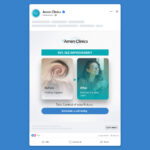Contents:
- Introduction: The Importance of Bottom-of-Funnel Marketing
- Understanding Bottom-of-Funnel Marketing
- Key Tactics for Effective Bottom-of-Funnel Marketing
- The Role of Trust in Bottom-of-Funnel Marketing
- Questions to Ask Before Implementing Bottom-of-Funnel Tactics
- Conclusion: The Future of Bottom-of-Funnel Marketing
Introduction: The Importance of Bottom-of-Funnel Marketing
Ten years ago, the digital marketing landscape was a vast, uncharted territory. Fast forward to today, and the journey from a potential lead to a loyal customer has been dissected, analyzed, and optimized to the nth degree. But here’s the catch: while many marketers have mastered the art of attracting eyeballs and piquing interest, the final stretch—the bottom of the funnel—remains a challenging frontier for many.
Why? Because this is where the rubber meets the road. It’s where interest transforms into intent, and intent culminates in action. It’s the stage where your prospects are on the cusp of making a decision, teetering between “maybe” and “yes.” And let’s be honest, in the vast ocean of internet marketing, it’s easy to drown in the noise and lose these precious prospects.
The Journey from Awareness to Purchase
Imagine you’re reading a gripping novel. The beginning introduces you to a new world, and the middle builds up the tension, but it’s the end that decides whether the book was worth your time. Similarly, the bottom-of-funnel marketing is the climax of your customer’s journey. It’s where the story you’ve been telling them reaches its peak. And just like any good story, this stage requires finesse, precision, and a deep understanding of your audience’s needs and desires.
But how do you ensure that your story doesn’t just end, but concludes with a standing ovation? How do you make sure that your potential customers don’t just admire your product but reach out, grab it, and make it their own? That’s the magic (and science) of bottom-of-funnel marketing.
Stay with me, and let’s dive deep into this crucial phase of the marketing funnel, unlocking strategies, tactics, and insights that can transform your “almost customers” into brand ambassadors.
Understanding Bottom-of-Funnel Marketing
Have you ever stood at the edge of a diving board, peering down into the water below, contemplating that final leap? That’s where your potential customers are when they reach the bottom of the funnel. They’ve journeyed with you, from the shallow end of awareness to the deeper waters of consideration. Now, they’re poised, ready to dive into commitment. But what exactly is this pivotal stage all about?
Definition and Importance
Bottom-of-funnel marketing isn’t just another buzzword in the ever-evolving lexicon of digital marketing. It’s the art and science of guiding your prospects through the final stages of their decision-making process. Think of it as the gentle nudge, the reassuring pat on the back, urging them to take the plunge.
At this juncture, your audience isn’t just any random internet user. They’re a highly qualified, narrowed-down group who’ve shown genuine interest in what you offer. They’ve consumed your content, engaged with your brand, and now stand at a crossroads. Your task? To nurture their decision-making process and persuade them that your product or service isn’t just a good choice—it’s the best choice.
B2B vs. B2C: The Distinct Approaches
Now, here’s a twist in the tale. The bottom-of-funnel journey isn’t a one-size-fits-all narrative. Depending on whether you’re catering to businesses (B2B) or individual consumers (B2C), the plot changes.
For B2B customers, this stage often involves a tango with sales representatives, detailed discussions, and perhaps even a demo or two. It’s a dance of data, logic, and long-term value propositions. On the other hand, B2C customers, empowered by the digital age, might make their final decision without ever speaking to a human representative. Their journey is driven by emotion, personal benefits, and immediate gratification.
So, whether you’re weaving a tale of strategic partnerships for a B2B audience or crafting a compelling story of personal benefits for B2C consumers, understanding the nuances of bottom-of-funnel marketing is crucial.
Key Tactics for Effective Bottom-of-Funnel Marketing
Imagine you’re at the grand finale of a fireworks show. The sky has been painted with a myriad of colors, each burst more spectacular than the last. Now, it’s time for the showstopper, the grand crescendo that leaves the audience in awe. That’s what bottom-of-funnel marketing is all about — delivering that final, unforgettable impact. But how do you ensure your tactics truly shine? Let’s unravel the strategies that can make your marketing efforts truly sparkle.
Case Studies: Real-world Success Stories
Ever heard the phrase, “Seeing is believing”? In the world of marketing, it’s more like, “Reading real success stories is believing.” Case studies are the testimonials of the business world, showcasing how your product or service has transformed businesses, solved problems, and delivered value. But here’s the trick: it’s not just about showcasing success; it’s about making it relatable.
When crafting case studies for the bottom of the funnel, focus on stories that resonate with your target audience. Highlight challenges they might be facing, solutions you’ve provided, and the tangible results achieved. Remember, it’s not just a story; it’s proof of your promise.
Blog Posts: Addressing Final Concerns and Questions
At this stage, your prospects are almost convinced, but they might still have lingering questions or concerns. Enter blog posts — your tool to address these final hurdles. Tailor your content to specific buyer personas, ensuring it’s as relevant and personalized as possible. Dive deep into product features, answer common implementation queries, and showcase benefits in a way that speaks directly to the reader. And always, always end with a compelling call to action.
Infographics: Visualizing Success and Value
In an age of information overload, a well-crafted infographic can be a breath of fresh air. It’s visual, it’s concise, and it packs a punch. Use infographics to highlight customer stories, showcase product benefits, or even present data in a way that’s both engaging and informative. Remember, a picture is worth a thousand words, but a well-designed infographic? That’s priceless.
Paid Advertising: Targeted Remarketing for Conversions
You’ve got a lead, they’ve shown interest, but they haven’t converted yet. It’s like they’ve left the theater just before the climax. With paid advertising, especially remarketing, you can lure them back in. By targeting ads based on their previous interactions with your brand, you can serve them content that’s not just relevant but also timely, increasing the chances of conversion.
Promo Codes: The Final Push to Purchase
Sometimes, all a prospect needs is a little nudge, a small incentive to take the leap. Promo codes can be that gentle push. Whether it’s a discount, a free trial, or an added bonus, offering something extra can tip the scales in your favor. Especially if you know they’ve shown interest, like adding a product to the cart but not checking out. A well-timed promo code can be the difference between a missed opportunity and a sale.
The Role of Trust in Bottom-of-Funnel Marketing
Imagine standing at the edge of a cliff, the wind rustling your hair, the vast expanse of the ocean stretching out before you. You’re tethered to a bungee cord, and you’re about to take the leap of a lifetime. But would you jump if you didn’t trust the cord, the harness, or the experts guiding you? Similarly, in the world of marketing, trust is that invisible tether, that unspoken bond that propels a potential customer to take the leap with your brand. Let’s delve into the intricate dance of trust in bottom-of-funnel marketing.
Building and Maintaining Brand Trust
Over the last decade, the digital landscape has been flooded with brands, each promising the moon and the stars. But promises alone don’t cut it anymore. In this age of information, customers are savvy, discerning, and crave authenticity. Building trust isn’t about grand gestures; it’s about consistent actions, transparent practices, and genuine interactions.
Every touchpoint, from your website to customer reviews, from social media engagements to post-purchase support, plays a role in building this trust. And once earned, it requires nurturing. Regular communication, upholding promises, and addressing concerns proactively are the bricks and mortar of this trust edifice.
Ensuring Transparency and Authenticity
Have you ever been captivated by a story, only to find out later that it wasn’t true? The sense of betrayal, however small, lingers. In the world of marketing, authenticity isn’t just a buzzword; it’s the foundation of a lasting relationship. It’s about being genuine in your promises, transparent in your practices, and real in your interactions.
Whether it’s showcasing real customer testimonials, being open about product limitations, or admitting to a mistake, transparency fosters trust. It tells your customers, “We value you enough to be honest with you.” And in the bottom-of-funnel, where the decision to commit hangs in the balance, this trust can tilt the scales in your favor.
Questions to Ask Before Implementing Bottom-of-Funnel Tactics
Picture this: You’re about to embark on a grand adventure, a journey into the unknown. You’ve packed your bags, chart your course, and you’re raring to go. But wait! Before you set forth, there are some crucial questions you need to ask, checkpoints to ensure you’re truly prepared. Similarly, before diving headfirst into bottom-of-funnel marketing, there are pivotal questions that can guide your strategy, refine your approach, and amplify your results. Let’s unravel these questions, shall we?
Is the content aligned with the buyer’s current stage?
It’s like serving the dessert before the appetizer; timing is everything. Your content should resonate with where the buyer is in their journey. Are they seeking validation? Are they comparing options? Or are they looking for that final nudge? Tailor your content to answer their specific questions and address their unique concerns at this stage.
How personalized is the approach?
Remember the thrill of hearing your name in a story as a child? Personalization has that magic, making the listener (or reader) feel seen, heard, and valued. Are your tactics generic, or are they tailored to the individual? Are you leveraging data to offer personalized solutions, recommendations, or offers? The more bespoke your approach, the deeper the connection.
Are there clear calls to action?
Imagine reading a gripping novel, being completely engrossed, and then… it just ends, without a conclusion. Frustrating, right? Your bottom-of-funnel tactics should guide the prospect, leading them to the next step, whether it’s making a purchase, scheduling a call, or signing up for a demo. Is your call to action compelling, clear, and irresistible?
Have you built-in mechanisms for feedback and improvement?
The digital landscape is ever-evolving, and what works today might be obsolete tomorrow. Are you open to feedback? Do you have mechanisms in place to gauge the effectiveness of your tactics, gather insights, and iterate for better results? Remember, the journey of marketing is one of continuous learning and adaptation.
Are you truly offering value, or just pushing for a sale?
This is the heart of the matter. At the end of the day, are you genuinely solving a problem, meeting a need, or adding value to the customer’s life? Or is it all just a sales pitch? Authenticity shines through, and customers can sense when they’re being valued versus when they’re just being sold to.
Conclusion: The Future of Bottom-of-Funnel Marketing
As the curtain falls on our exploration of bottom-of-funnel marketing, let’s take a moment to reflect. Picture a grand theater, the stage set, the audience in rapt attention, and the final act delivering a performance that leaves an indelible mark. That’s the power and promise of effective bottom-of-funnel strategies. But what does the future hold?
The digital realm is akin to shifting sands, ever-changing, and evolving. Yet, amidst this flux, one truth remains constant: the human desire for connection, understanding, and value. As marketers, our task is to tap into this universal truth, to craft narratives that resonate, strategies that deliver, and experiences that transform.
Taking the Next Steps: Actionable Takeaways for Marketers
The journey doesn’t end here; it’s merely the beginning. Armed with insights, strategies, and a deeper understanding of the bottom-of-funnel landscape, it’s time to chart your course. Here are some parting thoughts to guide your way:
- Listen Actively: The voice of the customer is your North Star. Tune in, gather feedback, and iterate.
- Stay Authentic: In a world of noise, genuine value and authenticity shine the brightest.
- Never Stop Learning: The digital landscape is vast and varied. Stay curious, stay updated, and stay ahead.
Remember, at the heart of every successful marketing strategy is a simple truth: understanding and serving the customer. As you venture forth, keep this at the core of your efforts, and success is sure to follow.
Sources:
- 5 Bottom of Funnel Marketing Tactics to Explore in 2023 – Simplilearn.com. Retrieved from https://www.simplilearn.com/bottom-of-funnel-marketing-article
- Bottom of the Funnel: Definition, Goals and Tips | Indeed.com. Retrieved from https://www.indeed.com/career-advice/career-development/bottom-of-funnel
- Bottom-of-Funnel Marketing: 5 tactics to increase conversions – Rock Content. Retrieved from https://rockcontent.com/blog/bottom-of-funnel/
- 10 Bottom-of-Funnel Marketing Tactics to Boost Your Conversions – Wishpond Blog. Retrieved from https://blog.wishpond.com/post/115675443708/bottom-of-the-funnel-marketing-tactics
- Bottom-of-funnel marketing (BOFU) – ClearVoice. Retrieved from https://www.clearvoice.com/resources/what-is-bottom-of-funnel-marketing/






